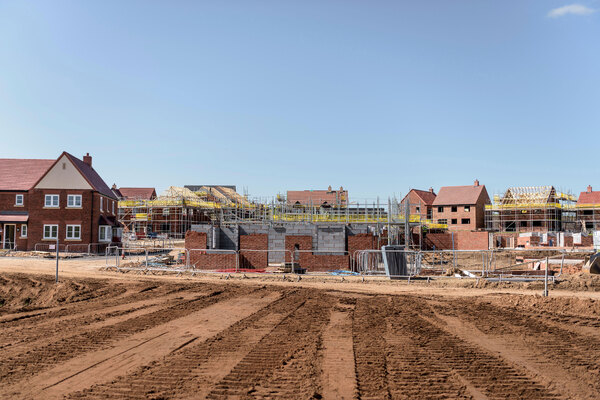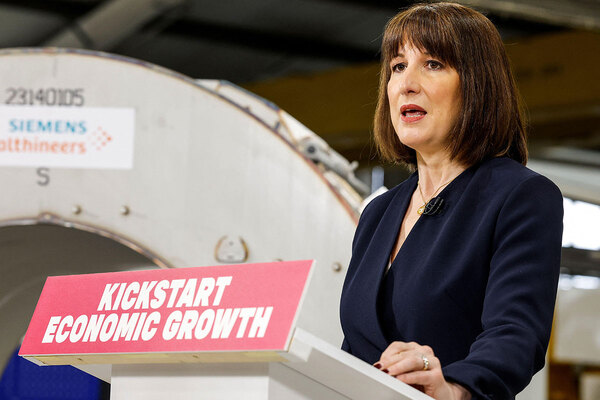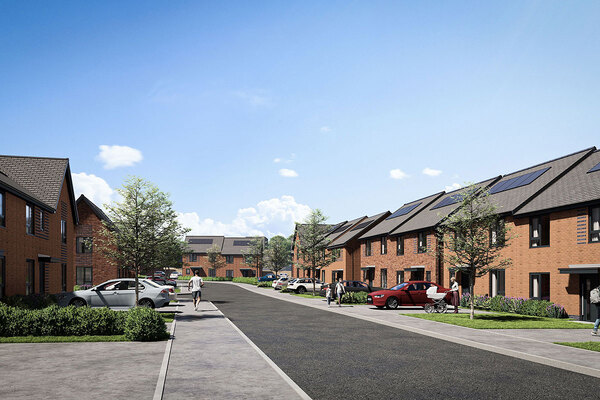What funds do social landlords need to build more homes?
Given the current unstable financial climate how likely is it that the sector will prioritise development this year? A survey by Inside Housing and Together finds out
In association with:
![]()
More than one million households in England are waiting for social housing, according to government figures. Evaluating this, homelessness charity Shelter estimates that the country is losing more than 15,000 social homes a year after sales and demolition.
Meanwhile, a further 70,000 households in Wales, 183,000 in Scotland and 44,000 in Northern Ireland also await social homes, according to figures published by the Welsh government, the Scottish Conservative Party and the Northern Ireland Housing Executive.
Pressure on landlords
At the same time, pressure continues to mount on social landlords who, fresh from carrying out critical building safety upgrades, must now consider how they balance the need for costly retrofits with new development as the sector works towards hitting net zero by 2050.
It is with this in mind that Inside Housing carried out a survey with specialist mortgage and secured loan provider Together, to explore how these pressures, coupled with the financial climate, were impacting the delivery of new homes and what financial channels were being used to get shovels in the ground.
A total of 80 social landlords responded to the survey from across the UK, with responses received by major and small organisations with units ranging from under 500 (19%) to over 4,000 (58%).
A sizeable 52% of respondents were either already considering or would potentially consider scaling back development due to a lack of funding options.
Rising interest rates and a perception that borrowing for development was too risky in today’s environment were the main barriers to accessing funding, said 61% and 21% of respondents respectively. This was the case for Wales-based Newydd Housing Association, whose finance and resources director, Elizabeth Lendering, says that while the organisation is continuing to build homes, it is scaling back some of its development.
“We have scaled back, we are trying to be more cautious and [the reason] is rising interest rates. We’re still doing our main programme but it’s the ‘extra’ or ‘nice to haves’ that we’ve decided to shelve. We had considered doing some slightly riskier market sale, but we decided that now isn’t the time to be borrowing money to be doing something higher risk,” she says.
Elsewhere in the survey, one landlord with more than 4,000 homes revealed that it was scaling back development, saying that it was “too risky [and] more costly”, while adding that it needed funds for retrofit. Another landlord with over 4,000 homes that was also scaling back development said: “Grant subsidy has not kept pace with inflation, build costs are too high and schemes [are] unviable.”
Welcoming JV options
Encouragingly, 48% of survey respondents said they were not considering scaling back development due to funding, while more than half said they would be open to more joint ventures (JVs) with for-profit landlords or private developers to enable development. A further 39% said they might be open to this.
The willingness to seek out new JVs and partnerships marks a positive shift in sentiment, according to Alex Bodie, head of social housing at Together.
He says: “Providers are starting to talk more about doing something different because of the market we’re in. You often find when your back is against the wall, innovative solutions can come out of it.”
Recently, Warwick District Council set up a wholly owned housing company, Milverton Homes. The group is able to borrow money from the Public Works Loan Board (PWLB) at a lower rate than the private market, which it then lends on to its private sector partner, Vistry Partnerships. The council then uses the surplus made from the loan to invest in development.
Sally Kelsall, housing strategy and development manager at the council, explains: “They pay us back and then any profit [from that] goes to the council. The council, where it was struggling financially, saw it as a way of getting income in, so we borrow money from the PWLB and then lend it out to the private developer and make a bit of money on it, and [the developer] gets it cheaper than the private market rate.”
She says access to grants and the PWLB mean that the council is able to continue with Section 106 and land-led development, having started developing in 2019.
“We went from a handful of properties to a programme of a couple of thousand. We’ve just bought a couple of sites at around 600-700 units, but it’s early days; we’re only just doing masterplans, so we’ve yet to see what will happen but we’re ploughing ahead,” she says.
In other areas, one social landlord respondent said it was taking on more lease management work to raise funds with another, saying it was in talks with other associations to spread the risk on larger sites. Another said there were “far more” opportunities with private developers since they were “quicker to move on purchasing accommodation”.
One respondent added: “We have many JVs with private developers. For-profits to date have not demonstrated appetite for planning and construction risk and their financial return expectations are unduly high.”
Despite an appetite for partnering and JVs, there was a sentiment among respondents that any deals struck should be done so with caution. One respondent said “it would depend on how it fits with culture and values”, while another noted that JVs were “difficult to dissolve. Contractual partnerships [are] the better approach.”
In numbers
48%
Respondents who are not considering scaling back development
53%
Respondents who would be more open to JVs with for-profits or private developers
26%
Respondents who are keen to seek out shorter-term finance
39%
Respondents who say rising interest rates factor into decision to borrow funds
Flexing it
Elsewhere, the survey revealed 26% of respondents are keen to seek out shorter-term financing options, with a further 41% saying they might be interested in this.
This was echoed by Ms Lendering, who says: “Our strategy was always to go for very long-term loans, for the longest period tenure and we might still go for that if the rates settle, but at the moment, we are looking for something a little more flexible.
“So, shorter 15-year bank lending on a flexible revolver facility rather than a fixed rate – so flexible drawdown and flexible tenure.”
Adding to this, Mr Bodie says his organisation has seen “quite a few examples of this recently”.
“This might not be a housing association, it might be a social housing aggregator in the supported housing space. They might have a pension fund or real estate investment trust [REIT] in the background maybe forward funding their development,” he says.
“We’re finding that quite a few of these REITs or pension funds are almost saying, ‘We are still interested in taking this on from you, but we might not forward fund it now because cash is a bit tight.’ So, we’re finding people are coming to us looking for short-term funding to get the development off the ground and built, knowing that the REIT or investment vehicle is going to come in and take that once it’s done.”











